 backpacks
backpacks
 backpacks
backpacks
Ski tourists need a backpack that will comfortably carry their avalanche essentials, food and water, and extra clothing - plus be able to carry skis securely. The number of available options is huge, and this may be a good thing, since each individual's idea of what constitutes a comfortable and useful pack varies by body shape, load, and type of trip.
Many people find it makes sense to own two ski packs - one intended primarily for day trips, with around 30 liters of capacity, and one for overnight or longer, with a volume of 40-50 liters. A well-designed mid-sized pack that can be cinched down can work for both purposes. For European hut-type touring, where you only need to carry personal items, a bit of food and water, and a sleeping bag liner (no tent or pad), a pack with around 40 liters of capacity is perfect. If you need to carry a tent or bivy, pad, stove, and rope, 50-52 liters is about the minimum you can get by with, which usually means looking at backpacking alternatives rather than ski-specific packs.
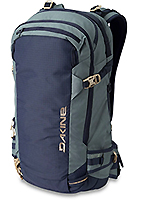
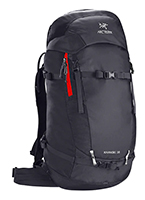
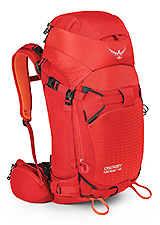
With both categories of pack, make sure it has double straps on both sides to affix skis, and some provision for carrying an ice axe. Easy access to the main compartment and auxiliary pockets while loaded, water-resistant design and the ability to carry skis diagonally as well as in the "A" frame configuration are pluses. Some new designs (see the Dynafit Manaslu pictured above) have incorporated a "quick carry" feature that allows you to sling your skis on the pack in a loose diagonal carry without taking the pack off - a very nice feature when your clinging to a steep crusty slope trying to transition to bootpacking without losing everything.
Avalanche airbag packs are relatively new to the discussion, and basically come in two flavors: Those that use a compressed gas system, and those that rely on an electric fan to inflate the bag. Compressed gas systems normally are good only for a single deployment; after that, the gas cannister needs to be refilled at an appropriately equipped shop. Electric systems can commonly be used for several deployments, but require periodic recharging either from an electrical outlet or in some cases by batteries.
If you travel with a compressed gas system, be aware that TSA disallows any filled cannister with explosive potential, so you'll need to travel with an empty cannister and plan to have it filled at your destination - this is sometimes more difficult than it would seem. Most systems require replacing gaskets or "O" rings with each refill, so you should also stock up on these.
Airbag systems have been shown to be effective in saving avalanche victims' lives both in controlled tests and in the field, but add weight, cost and complexity as well as taking up space in your pack. Whether you feel the negatives are outweighed by the life-saving potential is a very personal decision, but if you're caught in a consequential slide you'll almost certainly be glad to have one.
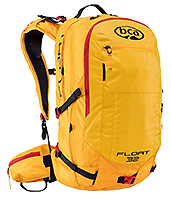
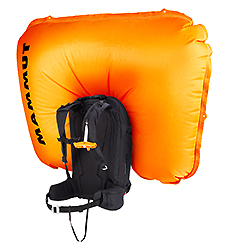
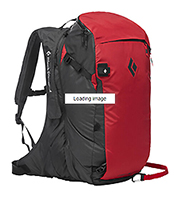
© 2022 Gregory C. Louie